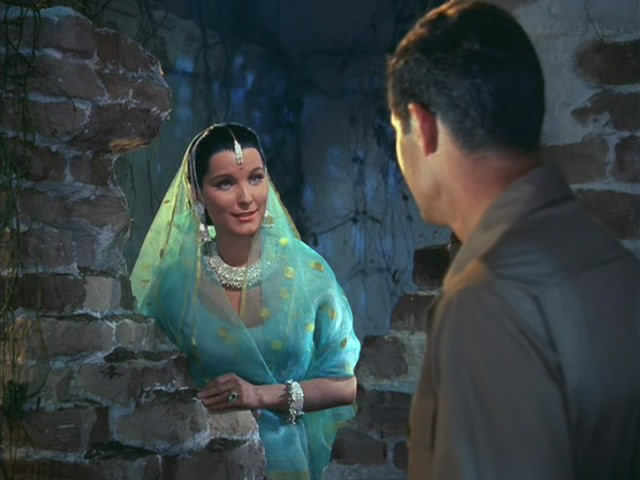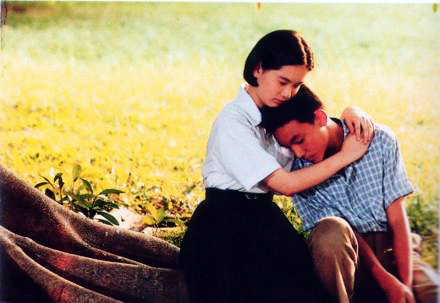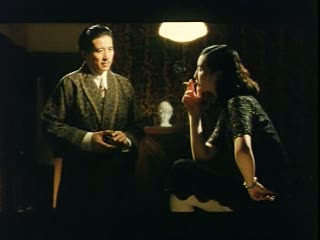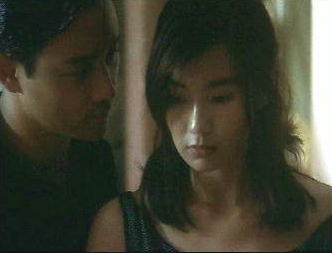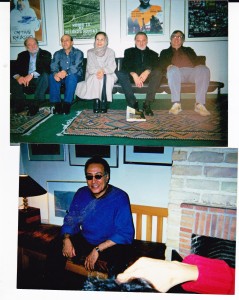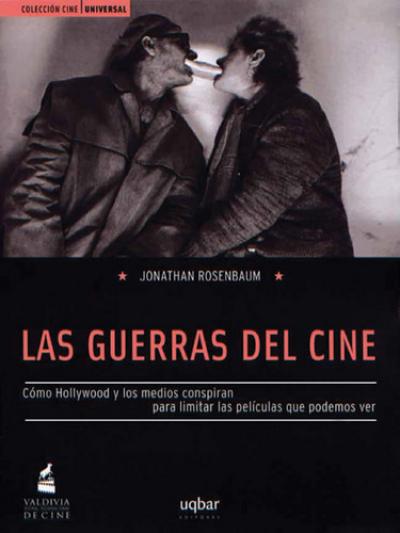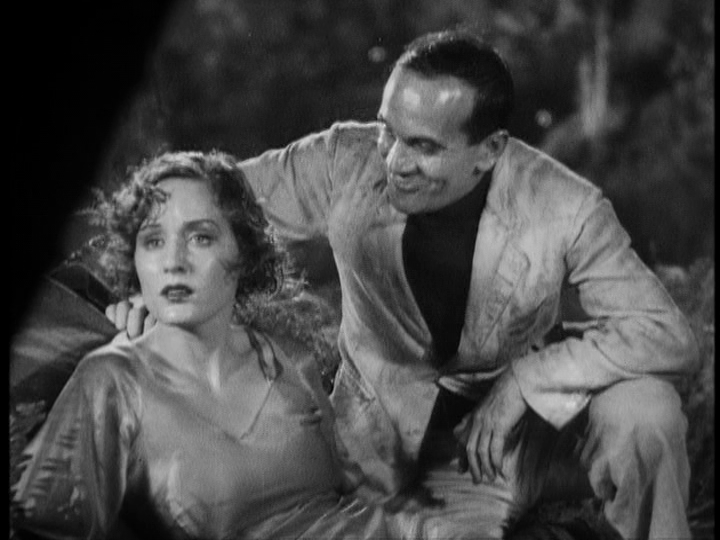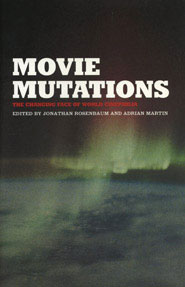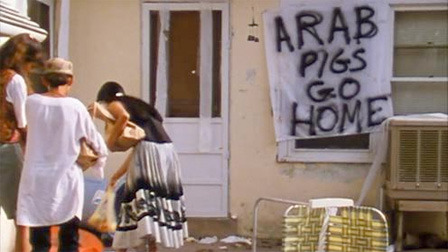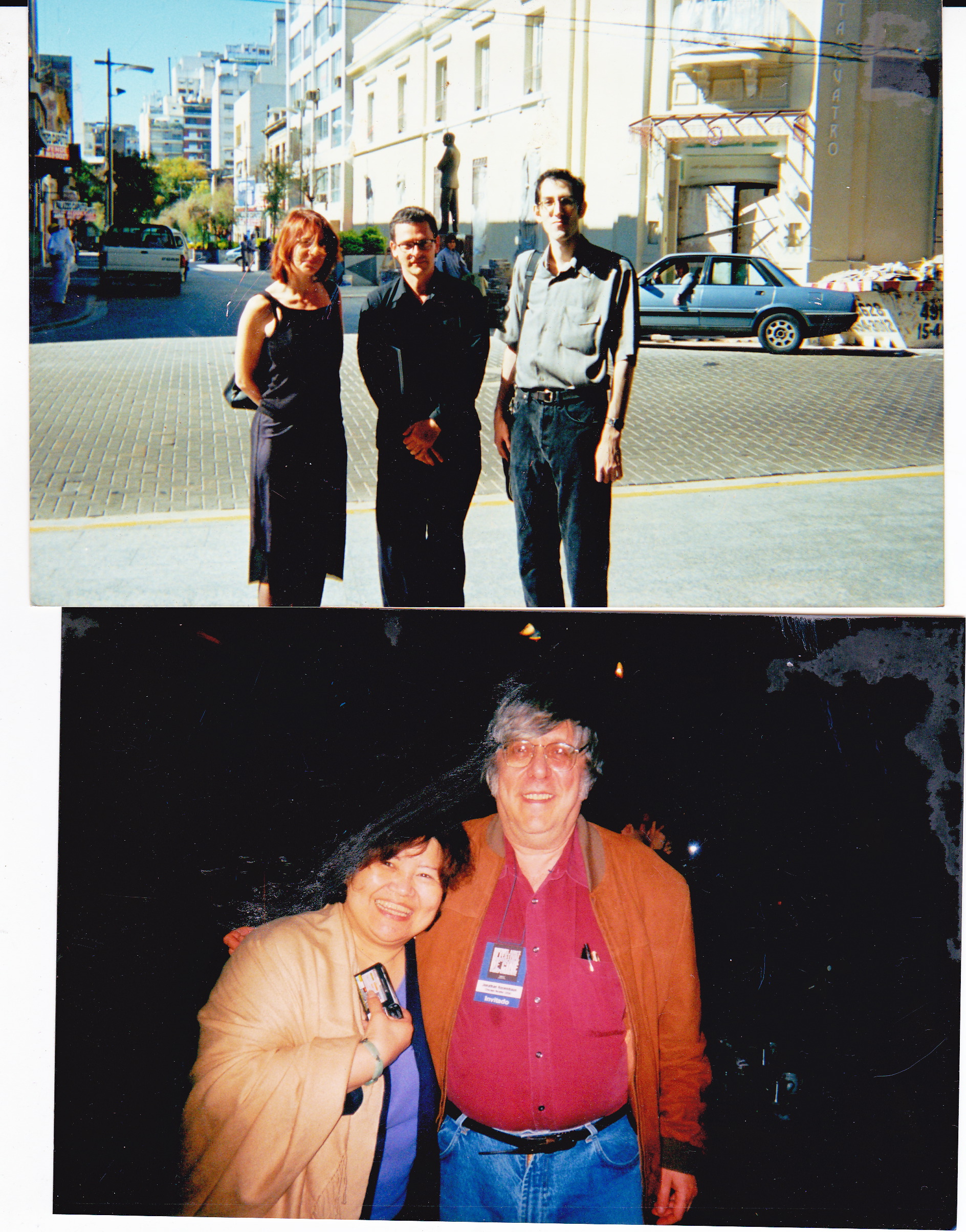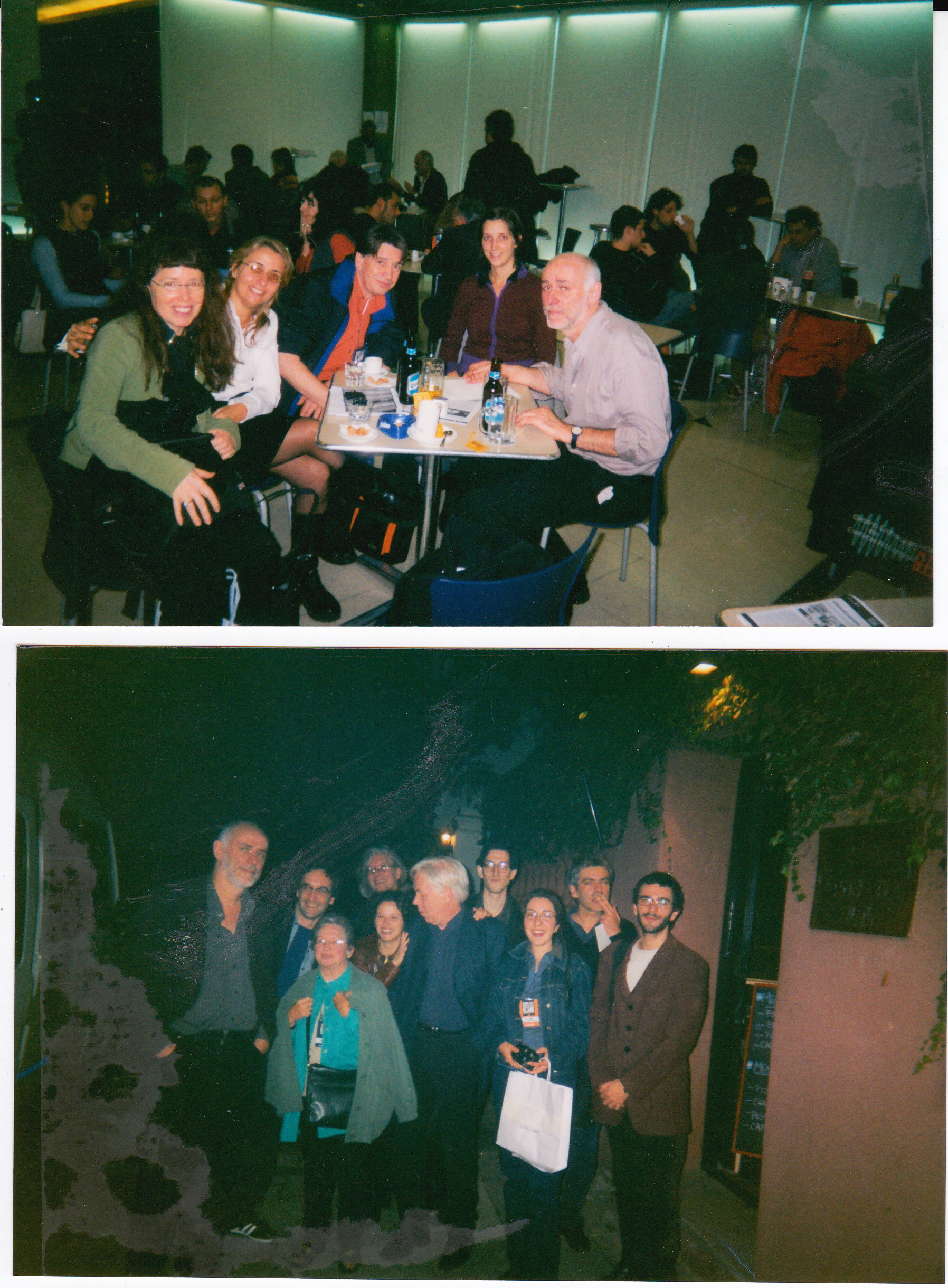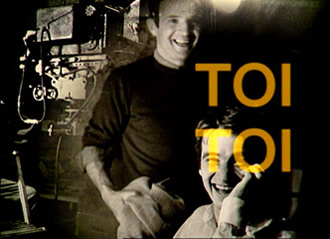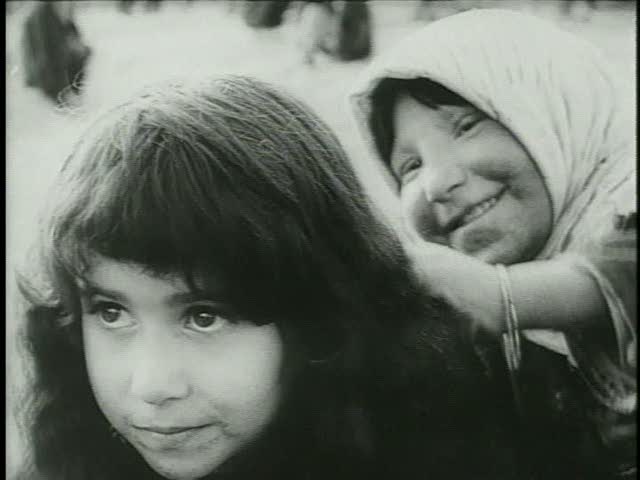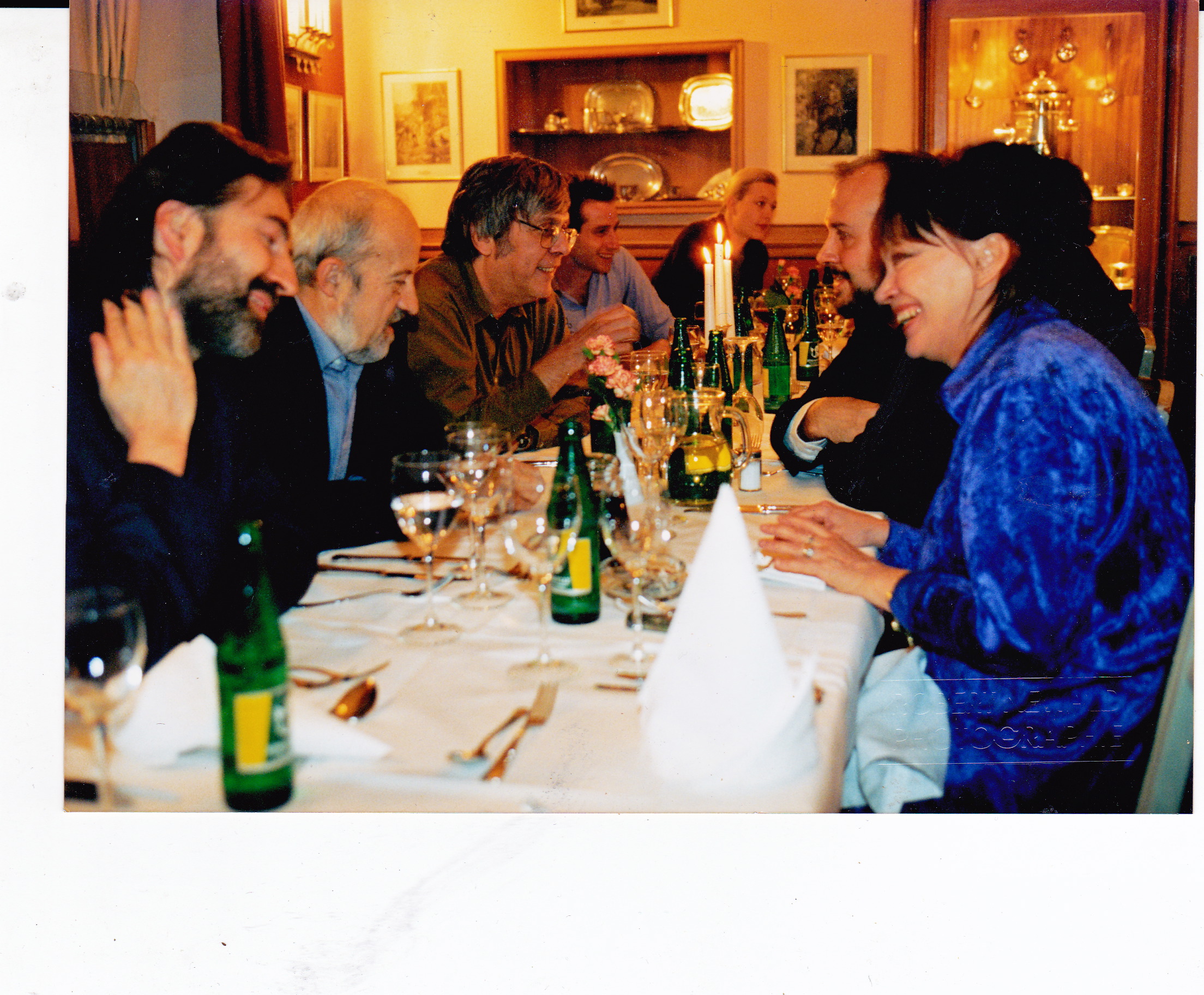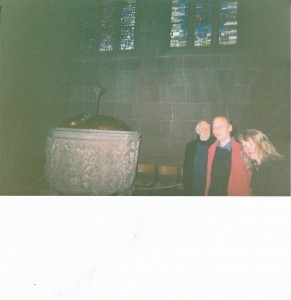Commissioned by Richard Porton and written for (and published by) On Festivals: 03 (Dekalog), edited by Richard Porton, New York: Columbia University Press, 2009. Because of the length of this, I’m running it in two parts, and this is the second part. — J.R.
Apart from New York and Cannes, I can almost count the other film festivals I attended during the 1970s on one hand: San Sebastian in 1972; London in 1974–76 (after moving to London to work for the British Film Institute, as assistant editor of the Monthly Film Bulletin); Edinburgh in 1975 and 1976 (which I covered both years for Sight and Sound); Filmex in Los Angeles in 1977–78 (after I moved from London to San Diego, to teach film at the University of California); the Toronto Festival of Festivals, thanks to David Overbey, in 1978; and Venice, to attend a three-day conference called The Cinema in the 80s, in 1979.
The San Sebastian bash, held back then in July, was by far the glitziest -– an event that incorporated not only a good many midnight banquets at country clubs, but also a trip to Pampelona to attend the bullfight, with Howard Hawks — the festival’s guest of honor, head juror, and the focus of the festival’s retrospective — holding court. This was of course during the Franco period – I can recall buying the International Herald-Tribune there daily, and discovering on occasion that articles had been scissored out of every copy. And the degree to which the festival hospitality served as propaganda for a repressive regime – which was already evident when I had to pass through a ridiculously lavish spectacle on the grand stairway of an old opera house on my way out of the gala screenings, all the other exit doors being locked –- became most apparent to me on the last day of the festival, when my passport was stolen (a frequent occurrence, I heard, due to San Sebastian’s relative proximity to the French border).
This actually proved to be a stroke of good fortune for me, because during the day it took me to acquire a replacement passport at the US embassy in Bilbao, the sweetness of the festival staff in helping me out included at least two or three trips to the local police station, where I wound up getting to witness a lot of what the festival for the previous ten days had successfully strived to keep invisible. (In all fairness, though, I should note that the festival’s hospitality was no less lavish when I returned there in 1987, a dozen years after Franco’s death.)
* * *
I estimate that up through the fall of 2007, I’ve attended roughly 165 film festivals in 41 separate venues. But during the 1980s, I was still getting my feet wet. Apart from my second visit to San Sebastian, this mainly included starting to attend the Toronto festival on an annual basis in 1981 (when I was invited to program a then-regular sidebar called Buried Treasures, which included that year the North American premieres of the director’s cuts of Fritz Lang’s Indian films and Elaine May’s Mikey and Nicky); visits to the Denver film festival in 1983 and 1989 (initially to promote my book Film: The Front Line 1983, published by the Denver-based Arden Press); starting to attend the Rotterdam film festival on an almost-annual basis in 1984; starting to attend the Chicago International Film Festival regularly in 1987 (shortly after I moved to Chicago from Santa Barbara to start reviewing films for the Chicago Reader, where Chicago film festival coverage was a major part of my job); the San Francisco film festival for the first time in 1988; and both the US Film Festival (as a juror) in Dallas and Berlin (for the first of three times) in 1989.
* * *
I’m proud to say that I was the first member of the American press ever invited to the Rotterdam festival, and I owe this privilege to the friendly intervention of Sara Driver and Jim Jarmusch, whom I’d known ever since I devoted a chapter of my Film: The Front Line 1983 to Sara. At that time, practically the entire event was held in a building called the Lantaren (which still functions today as one of the festival venues), where I recall attending press conferences with Joseph L. Mankiewicz (who was receiving the Erasmus Award that year), Raúl Ruiz (whose films I was seeing for the first time), and Philippe Garrel (who was showing Liberté, la nuit). This was a festival that soon became my overall favorite –- at least until it was briefly supplanted by the Buenos Aires Festival of Independent Film during the four years (2001–2004) it was directed by the film critic Eduardo Antin (better known as Quintín), about which I’ll have more to say a bit later.
Part of what was special about Rotterdam was its semi-clandestine atmosphere -– undoubtedly linked in part to the awful winter climate in late January and early February (the damp chill, often accompanied by rain and/or fog) as well as to the off-the-beaten-track nature of many of its films, not to mention other factors, such as the fact that one of the main festival hotels, the Centraal, had served as Gestapo headquarters during the Nazi occupation, or the fact that it was relatively easy to get stoned on grass before some screenings (a practice I’d already cultivated as a cinephile in New York during the 1960s and Cannes during the 1970s).
* * *
My first encounters with many countries have come about through accepting invitations to film festivals, and this has many clear advantages as well as certain drawbacks in getting acquainted with foreign cultures. My first visit to Asia, for instance, was as a juror at the Asian Pacific Film Festival, held each year in a separate country. The year I went, 1991, it was in Taipei, and I wound up as the only non-Asian member of a jury that included, if memory serves, three Taiwanese members (including critic Peggy Chiao, the head of the jury) as well as Stephen Teo (a specialist in Hong Kong cinema) and Aruna Vasudev (the India-based editor of Cinemaya). This alone provided a kind of crash course in Taiwanese culture that I very much appreciated; it often meant often going out to dinners where Mandarin was the only language spoken apart from a few occasional English remarks addressed to me and/or Aruna, which had the advantage of making me feel like I wasn’t a tourist. Most of our work was carried out over 11 days in a private screening room –- the public screenings only started after we made our selections, coinciding more or less with the Golden Horse Awards -– and to save time we were often presented with Taiwanese takeout lunches to eat in the dark, during which I could neither see nor identify most of what I was eating. There were also some wonderful touristic outings to Buddhist temples and the Royal Palace Museum as well as other memorable experiences -– including a special screening of Banana Republic arranged for me by Peggy (specifically for its insights into the existential dilemmas of being exiled from mainland China), as well as a proper Chinese banquet attended by everyone from Chen Kaige to Wong Kar-wai, a late-night meeting with John Berry and Pierre Rissient at a jazz disco called the Blue Note, and an all-night party with cognac and karaoke thrown by Hou Hsiao-hsien at another club.
My point, really, is that all these experiences made me feel I was learning something about the culture of the country I was visiting -– unlike the usual circumstances attending most film festivals, which virtually guarantee being shut out of most aspects of everyday life and remaining inside a relatively autonomous dream bubble. But perhaps the biggest lesson of all, involving the highly interactive nature of the global Chinese Diaspora and how quickly information could be exchanged within this network -– something that became no less evident via fax machines during the Tianamen Square demonstrations a few years later — came about a week after I returned to Chicago from Taipei.
A waiter at a Chinese restaurant asked me if I’d attended the Golden Horse Awards; when I asked him in stupefied response how he could have possibly known that, he explained that he’d just seen me appear briefly in a video distributed in Chicago’s Chinatown.
I luckily visited Taipei at a peak time for Chinese and Taiwanese art cinema; among the films I saw there for the first time were the long versions of A Brighter Summer Day and Actress (both of which were, I believe, receiving their world premieres at the Golden Horse) as well as Days of Being Wild. But I could cite a few other festivals that I was often happier to attend for where they were located than for what they were showing: those held in Austin (South by Southwest, 2001– 2002 and 2005; Cinematexas, 2001), Dallas (the USA Film Festival, 1989), Hong Kong (2000), Honolulu (1990), Savannah (2001–2003), Tehran (the Fajr Film Festival, 2001), and Valdivia, Chile (2007).
If memory serves, during the four or so pleasant and friendly days I spent at the Thessaloniki International Film Festival in 1993, I found I had to devote more of my time to tracing the bureaucratic steps needed to acquire my return ticket to Chicago than I was able to spend seeing any films, including those at the Jules Dassin retrospective being held there that year.
Serving as a jury member in Tehran and Valdivia, I didn’t get to sightsee quite as much as I would have liked, but I still found certain ways to get tastes of Iranian and Chilean culture. Curiously, I found that I was repeatedly asked the same question by locals at each festival. In Tehran, the question was, more or less, with a few variations, ‘Is the reason why Americans like Iranian films so much because they show so many poor people, which is the way they like to view Iranians?’ After awhile, I developed a boiler-plate response: ‘Maybe it’s true that Iranian films show too many poor people. But American films show too many rich people, so you’re getting just as distorted a picture of my country as I’m getting of yours.’
In Valdivia, the question was much simpler and asked without much variation, and this one I found virtually impossible to answer: ‘What do you think of the Chilean film industry?’ (For me, this was tantamount to asking a Chilean who was visiting Chicago, ‘What do you think of the American postal system?’)
When I visited Tehran, Mehrnaz Saeed-Vafa, with whom I was coauthoring a book on Abbas Kiarostami at the time, was also visiting from Chicago. It turned out that we both had only one opportunity to see a work print of Kiarostami’s latest film, ABC Africa, at his own home, along with a few others, around 6 pm, near the end of the festival, almost immediately after my jury was supposed to complete its deliberations (i.e., by around 5 pm –- it often takes about an hour to drive anywhere in Tehran). The potential problem with this plan, however, was that one of my fellow jurors, the Hungarian filmmaker Béla Tarr -– an anti-cinephile with a vengeance, and also a friend -– didn’t like any of the films we saw, and found reasons to object to every film proposed for a prize. And even though our meeting started around 10 in the morning, by around 4 pm it was beginning to look like I wouldn’t make the screening of ABC Africa unless I could think up some radical ruse for preventing Béla from continuing his filibuster. So, Béla left the room briefly for the toilet, I seized the opportunity by proposing that we vote right away on a slate of prizes -– basically a list that granted some recognition of the favorite film of each juror (apart from Béla) -– and my motion passed before he returned. The most interesting consequence of this was that, if memory serves, Béla wasn’t even irritated by my ruse, which suggested that he may have been as trapped by his intransigence as the rest of us were.
One final anecdote, about the festival’s closing-night ceremony. As someone who tends to dress up as infrequently as I can manage to (I had a black suit made while I was in Taipei that I’ve tended to use ever since), I hastily packed black dress shoes for this occasion, only to discover a couple of hours before it was time to put them on that I had somehow managed to pack two right shoes and no left one. So I was faced with a difficult choice: either wear the yellow Nikes I’d also brought along to Tehran or limp through the evening on two right shoes. I opted for the former, and later was told that no one objected; it was assumed that wearing tennis shoes to a formal event was a quaint American custom, regarded as chic in the US.
* * *
What was special about Quintín’s four years of running BAFICI, which started a decade later, was the front-and-center importance film criticism was made to have in almost every aspect of the planning, including the programming. I had already become friends with Quintín and his partner Flavia de la Fuente during my first visit to Buenos Aires the previous September, when the local chapter of FIPRESCI (the international film critics organization) had invited me to give a series of lectures and Quintín and Flavia had hosted much of my stay, and helped arrange a lengthy interview for the local film magazine El amante cine. Then, after Quintín had been appointed director of this relatively new (and city-run) festival in December, he decided to commission and publish a Spanish translation of my latest book, Movie Wars, which had only just appeared in English -– a somewhat radical decision insofar as I found a copy of Les Guerras del Cine in my hands when I arrived at the festival,where I was also serving on the competition jury, only four months later. (When a subsequent Chilean edition was brought out in Valdivia in 2007 — again with an index, and with a substitution of certain Chilean idioms and film titles for the Argentinian equivalents -– this took little more than a month from initial proposal to a copy of the book in my hands, thereby giving the lie to all those bureaucratic American university presses that insist they need a year to carry our comparable projects.)
There were lots of experimental notions about festival programming being floated by Quintín during his four-year reign –- not only lectures of various kinds (including ones where I presented, at various times, Forough Farrokhzad’s The House is Black and Lewis Milestone’s eccentric Depression musical Hallelujah, I’m a Bum! -– the latter in an effort to engage with Argentina’s then-ongoing Depression), clusters of films in various thematic categories, and an unusually large number of revivals of rare classics (most of them coming directly from the Paris Cinémathèque), but also a few notions that he never got around to trying out. (Perhaps the wildest of these was to hold all the jury’s discussions and deliberations about the competition films in public, on a stage.) No less striking was his recognition of how crucial the social aspects of a film festival were by arranging to have a central ‘meeting point,’ a café, at the location where most of the screenings were -– a huge shopping mall named Abasto (the former site of the city’s outdoor market), where one could often expect to find friends between films, and where various panels were also frequently held.
It was in the spirit of such principles that I proposed during my second year at the festival (when they published a Spanish edition of another book I was associated with –- in this case a preliminary edition of an international collection I was coediting called Movie Mutations) an annual programme, which I wound up presenting over the next couple of years, called ‘Lost Cinema’ (or, in Spanish, ‘El club de las películas perdidas’). This consisted of inviting various filmmakers, critics, and programmers to select a film that was virtually impossible to see, and sometimes even illegal to show, screening it in a video format and then discussing it with the audience. The screenings were free and the selections weren’t mentioned by title in the festival catalogue (I encouraged the programmers to write descriptive hints about the films instead -– and, in some cases, to convey the film’s title to interested parties strictly by word of mouth). The basic idea was to try to approximate the conditions of showing rare works to your friends in your living room. And even though Quintín was initially somewhat skeptical of the whole idea, he let me try it out, and the results were pretty successful (even if the settings used each year -– a screening room at Abasto and an auditorium at a nearby arts center -– were, by necessity, more institutional than I would have liked). The participants, apart from myself both years, were Michael Almereyda, Thom Andersen, Frédéric Bonnaud, Eduardo de Gregorio, Sara Driver, John Gianvito (whose first feature, The Mad Songs of Fernanda Hussein -– which I’d initially seen at South by Southwest -– won the first prize the year I was on the jury), Hans Hurch (director of the Viennale), Kent Jones, Ron Mann, Adrian Martin, David Oubina, and Mark Peranson. If the series had continued for a third year, two filmmakers who had already agreed to participate were Claire Denis and Harun Farocki. But I’m happy to report it was later revived, at least in spirit, in Valdivia, when critic Gonzalo Maza proposed that I put on a similar one-shot programme of my own. I wound up showing two scarce Orson Welles items on video, both made around the same time as Touch of Evil –- his unsold, half-hour TV pilot The Fountain of Youth and a fully edited but silent sequence from his Don Quixote featuring Patty McCormack, Francisco Reiguera, and Akim Tamiroff, set inside a movie theatre.
* * *
Postscript
The problem with any survey of memories of this kind is that it could be spun out indefinitely. But realizing how much I’ve omitted, I’d like to conclude by listing, in chronological order, a dozen more especially vivid snapshot recollections. Over half of these involve meeting people, so I hope I can be forgiven for all the name-dropping.
1975: Meeting both Julia Solntseva (Alexander Dovzhenko’s widow) and Marie Seton (Eisenstein’s first English-language biographer) at the London Film Festival in 1975. (The latter’s two favorites at the festival, she told me, were Salo and In the Realm of the Senses.)
1989: Getting to see the world premiere of the finished print of Jacques Rivette’s 12-hour Out 1 (1971) in Rotterdam with only four or five other people, over a series of days, as successive reels arrived from France.
In 1990, getting to see Japanese films with Japanese audiences at the Honolulu film festival, where all the screenings were free to the public, and overhearing a couple of homeless street people give a rundown of their favorites at the previous year’s festival.
In 1996, my penultimate year on the selection committee of the New York Film Festival, I was invited by Godard to participate in a panel discussion about his Histoire(s) du cinéma in Locarno that would occur roughly halfway through our marathon viewing session in New York, in early August. In deference to Godard, I was kindly allowed to accept the invitation and fly to Locarno for just a weekend — during which time I was also able to see most of the early shorts of Abbas Kiarostami at a retrospective of his work and also see, for the first time, my favorite Iranian film, Forough Farrokhzad’s The House is Black. As it turned out, Godard didn’t arrive until a day or so after I left, but the panel itself — which also included Florence Delay, Shigehiko Hasumi, and André S. Labarthe — was memorable.(I hadn’t been able to join the other three in Rolle, Switzerland a few days earlier to view an avant-première of chapters 3a and 3b, but this ultimately led to an even more exciting experience: a little over a year later, Godard brought both these chapters as well as 4a to the Toronto festival, where he showed all three to me in his hotel room.)
In 1997, attending the Midnight Sun Film Festival in Sodankyla, Finland, far above the Arctic Circle, where I was present at the renaming of the town’s main street as Samuel Fuller’s Street (he had died the previous fall), and where I subsequently got to meet both Terry Gilliam and Chris Marker.
1998: A long dinner with Anna Karina and her father-in-law, John Berry, at the Viennale, with Ben Gazzara and Luc Moullet (among others) seated at the same table [see below].
2000: A free outdoor concert By Emir Kusturica and the No Smoking Orchestra, in Pesaro.
2002: In Weisbaden, at a series of private screenings organized by a friend from Munich, Hans Schmid, to select a slate of festival winners, along with (among others) film distributor Margaret Deriaz and film director Mike Hodges.
Later the same year, serving on the FIPRESCI jury at the Brisbane International Film Festival in Australia, and, immediately after awarding our prize to a particular favorite, Seijun Suzuki’s Pistol Opera, going directly to a cybercafé, where I was able to order a DVD of the film from Japan.
2005: Meeting Betsy Blair at Il Cinema Ritrovato in Bologna.
Locarno again, in 2005: After attending a Welles conference held in the middle of a massive Welles retrospective, one of the other participants, magician Abb Dickson, and I found ourselves stranded an extra day before we could fly back to the states, which enabled us to get better acquainted, and afforded me a chance to see several more of his tricks.
2006: My second look at Out 1, this time with English subtitles, presented by Mark Peranson in Vancouver, who brought the just-arrived Pedro Costa to greet the two dozen or so survivors as soon as it was over.


